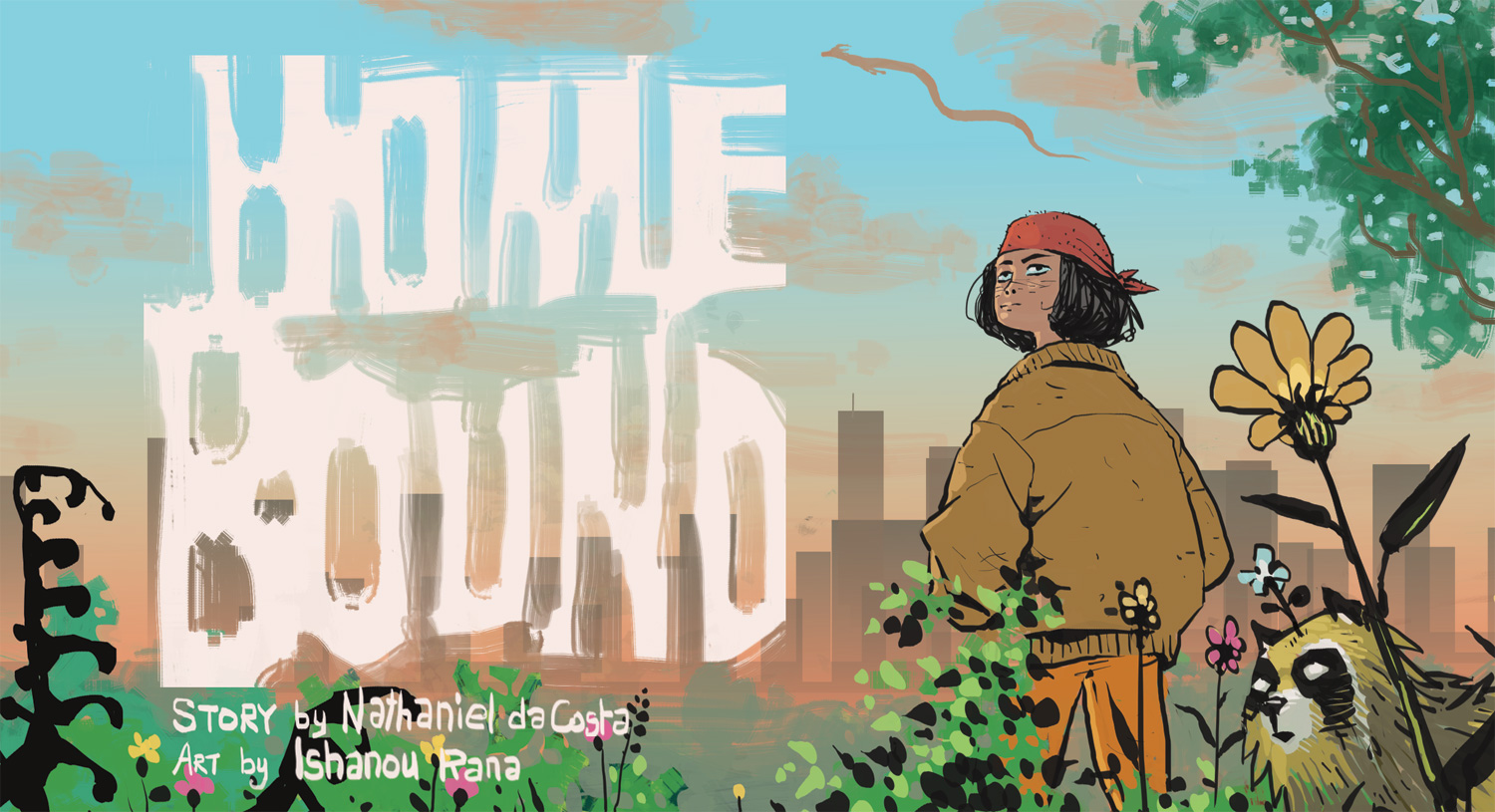
Vol 2 No 3 | Oct-Dec 2022
Homebound
Story by Nathaniel da Costa | Art by Ishanou Rana
The story behind ‘Homebound’ was inspired by multiple incidents around human-made tragedies but mainly from the disaster at Fukushima, Japan.
In 2011, there was a nuclear accident at the Fukushima Daiichi Nuclear Power Plant in Ōkuma, Fukushima, Japan. The proximate cause of the disaster was the 2011 Tōhoku earthquake that occurred on 11 March 2011 –the most powerful earthquake ever recorded in Japan. The earthquake triggered a powerful tsunami, with 13–14 metre high waves causing damage to the nuclear power plant. The result is the most severe nuclear accident since the Chernobyl disaster in 1986, classified as Level 7 on the International Nuclear Event Scale (INES). The Chernobyl meltdown is the only other accident to receive this classification.
There were immediate repercussions from the accident, the main one being that the Japanese Government was forced to create a 20-km-wide evacuation zone, evacuating an estimated 110,000 people. The evacuation was widespread and immediate, with many people forced to vacate, leaving their belongings behind.
Due to the radiation, the government made Fukushima an ‘exclusion zone’, with people banned from returning to their homes. That made the people who once lived there permanent exiles. Mr. Shiga was one of them. “I hope my ancestors will forgive me for leaving here,” he told the BBC in an interview [link below]. “It is not my fault I cannot come back. This place was stolen from us. I want to come back, I have a deep attachment to my home, but if I admit that to myself it is too painful, so I try not to think about it.”
https://www.bbc.com/news/world-asia-56252695
A wall (of ice)
A lot of the setting around the comic is derived from Fukishima, including the wall. In operation since 2016, the ice wall, as the structure in Fukishima is called, is really more like a barrier of frozen soil. Built by Kajima Corp, it cost 34.5 billion yen ($303 million) in public funds.
The ice wall is meant to keep contaminated water within the plant while keeping out groundwater, which becomes radioactive on seeping into the basements of the crippled reactors and coming in contact with highly radioactive debris there.
Coolant pumped into freeze tubes reduces temperatures to about -30º C in about 1,500 tubes filled with brine located at a depth of 30 metres along a perimeter of 1.5 km around the plant. This in turn freezes the surrounding groundwater into a contiguous wall of frozen soil, and the coolant is recirculated.
https://www.tepco.co.jp/en/decommision/planaction/landwardwall/index-e.html
Disasters and displacement
While the setting of the comic is heavily inspired by the accident at Fukishima, a major theme running through the story is of displacement. After incidents such as war and other disasters, both manmade and natural, entire communities are very often forced to move to safer zones. What happens to people when they are thus separated from their homes and sometimes families. Where and at whom do they direct their frustration, confusion, hurt and anger?
Children are the most at risk due to these conflicts. According to UNICEF data, about 36.5 million children worldwide have been displaced as a consequence of conflict and violence, as of the end of 2021. Children brought up in conflict zones, or refugee camps often struggle with concepts of identity and belonging, and feelings of alienation.
https://data.unicef.org/topic/child-migration-and-displacement/displacement/
https://data.unicef.org/resources/lost-at-home-risks-faced-by-internally-displaced-children/
While human-driven incidents almost always have an adverse effect on the environment and nature, there are numerous instances of nature regaining its balance and thriving in the absence of humans. The self-serving nature of human existence often means that our needs take precedence over everything else, affecting entire ecosystems.
Forced human evacuations like at Fukishima and Chernobyl allows nature to slowly reset and eventually thrive.
Scientists have seen that the absence of humans inside the exclusion zone could be favouring many species – big mammals in particular. This shows that the pressures generated by human activities can be more negative for wildlife in the medium term than a nuclear accident – quite a revealing vision of the human impact on the natural environment.
https://www.unep.org/news-and-stories/story/how-chernobyl-has-become-unexpected-haven-wildlife
https://www.sciencedaily.com/releases/2020/12/201214150340.htm

